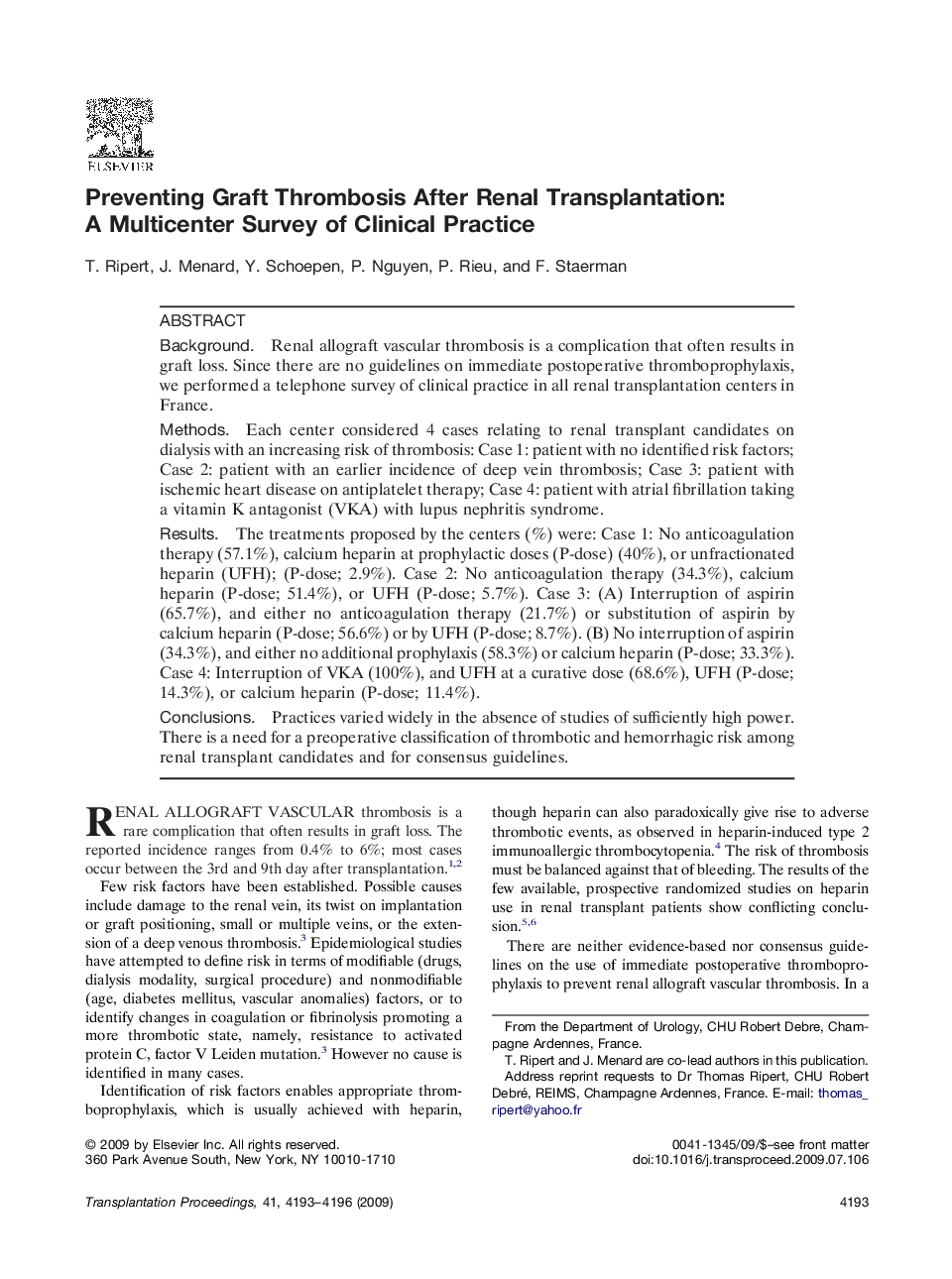| Article ID | Journal | Published Year | Pages | File Type |
|---|---|---|---|---|
| 4258487 | Transplantation Proceedings | 2009 | 4 Pages |
BackgroundRenal allograft vascular thrombosis is a complication that often results in graft loss. Since there are no guidelines on immediate postoperative thromboprophylaxis, we performed a telephone survey of clinical practice in all renal transplantation centers in France.MethodsEach center considered 4 cases relating to renal transplant candidates on dialysis with an increasing risk of thrombosis: Case 1: patient with no identified risk factors; Case 2: patient with an earlier incidence of deep vein thrombosis; Case 3: patient with ischemic heart disease on antiplatelet therapy; Case 4: patient with atrial fibrillation taking a vitamin K antagonist (VKA) with lupus nephritis syndrome.ResultsThe treatments proposed by the centers (%) were: Case 1: No anticoagulation therapy (57.1%), calcium heparin at prophylactic doses (P-dose) (40%), or unfractionated heparin (UFH); (P-dose; 2.9%). Case 2: No anticoagulation therapy (34.3%), calcium heparin (P-dose; 51.4%), or UFH (P-dose; 5.7%). Case 3: (A) Interruption of aspirin (65.7%), and either no anticoagulation therapy (21.7%) or substitution of aspirin by calcium heparin (P-dose; 56.6%) or by UFH (P-dose; 8.7%). (B) No interruption of aspirin (34.3%), and either no additional prophylaxis (58.3%) or calcium heparin (P-dose; 33.3%). Case 4: Interruption of VKA (100%), and UFH at a curative dose (68.6%), UFH (P-dose; 14.3%), or calcium heparin (P-dose; 11.4%).ConclusionsPractices varied widely in the absence of studies of sufficiently high power. There is a need for a preoperative classification of thrombotic and hemorrhagic risk among renal transplant candidates and for consensus guidelines.
